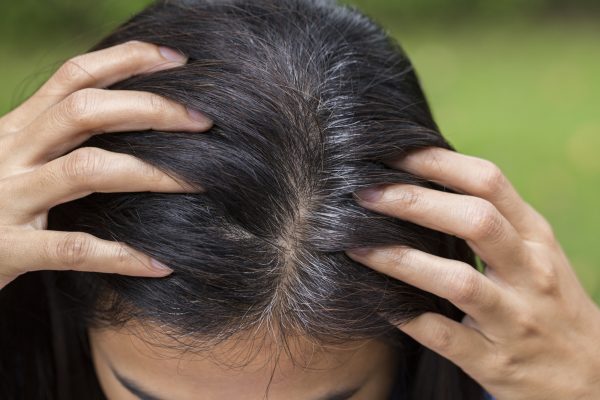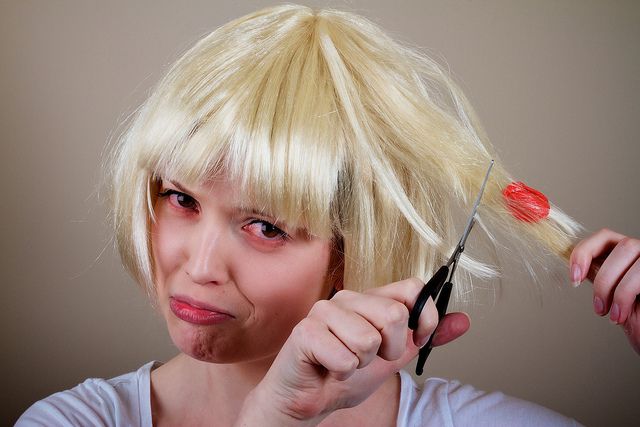The short answer is no, since heat damage is permanent.
The inner cortex is vulnerable to all forms of harm once the protein connections are destroyed and the hair cuticles are shattered. Your hair gets thinner and less flexible when the cortex is exposed.
Hair strands begin to split at the ends, where the hair is the oldest and has suffered the most damage, but those splits can spread up the hair shaft, separating numerous times and exacerbating the damage.
The strands of hair are more prone to breakage since the hair has lost its flexibility. When the hair gets too frail, the ends break off, resulting in flyaways.
Preventing heat damage is the best approach to cope with it. However, if your hair is already damaged from heat, there are things you can do to control it.
What causes heat damage to your hair?
You may find that your hair isn’t as lustrous, silky, or full as it once was after utilizing hot tools on a regular basis. When you shower, you may see more broken ends or an excess of strands falling down the drain. These are all signs of heat damage to the hair. Heat damage happens when you repeatedly blow dry, flat iron, or curl your hair at high temperatures for a lengthy period of time.
The majority of hot tools achieve temperatures of greater than 400°F, however this is deceptive. Most hair cannot withstand such high temperatures, and heat damage can affect all hair types, from pin straight to tightly curled.
Pull a damp strand of hair off your head after showering to test for heat damage. Pull the string carefully from both ends. If your hair extends about one-third of its length before returning to its regular length, it is dry but not damaged.
If the strand barely stretches slightly, does not extend at all, or breaks when stretched, you have heat damaged hair.
Levels of heat damaged hair
There are three stages of damaged hair, according to L’Oréal. Lifted cuticles provide a jagged look in level one injury, but the cortex is not totally exposed. The hair on level one is somewhat less glossy and thinner at the ends. Abrasions to the cuticles have occurred in level two hair, exposing the cortex beneath. When the cortex is exposed, it is more prone to further injury.
Your hair color, whether natural or colored, may fade, and you may have split ends. Level three represents the most severe damage. At this phase, the cuticles are the most damaged, and sections of them may be totally absent. When the cortex is exposed, it weakens, and the hair feels rough and gritty, dull, tangles and knots easily, and breaks off.
Why is heat damage to hair irreversible?
High temperatures permanently damage the structure of your hair’s protein connections. Each strand of hair is composed of keratin, a protein with a natural curvature known as the alpha helix. This may be found in both curly and straight hair.
When keratin is heated to temperatures over 400°F, the alpha helix begins to dissolve. The alteration is irreversible after the alpha helix is melted, and your hair will maintain the shape of the dissolved keratin links. When your hair grows past the follicle, it is composed of dead cells. As a result, the cells are unable to adapt, and whatever changes they undergo are irreversible.
There are no active cells available to heal the harm. Your hair suffers cumulative damage. You are unlikely to have heat damaged hair after only one blow dry or straightening session. Using hot tools at high temperatures on a frequent basis, on the other hand, prolongs the alterations in the protein bonds and moisture levels of each strand.
Eventually, those linkages are disrupted, and hair gets moistened in an irreversible way. If you continue to use hot tools, the harm will increase.
Understanding the amount of hair damage
Consider the following to determine the amount of your hair’s damage:
- Have you used chemical treatments on your hair, such as perms or relaxers?
- Do you use a towel to blot your hair after you shower?
- Do you frequently bleach or color your hair?
- Do you omit moisturizing creams after showering?
- Do you spend a lot of time outside, preferably in the sun?
- Do you brush your hair forcefully to get rid of knots?
If you responded yes to any or all of these questions, your hair might have been damaged further by environmental or mechanical causes in addition to heat.
Taking care of heat-damaged hair
As previously stated, damaged hair cannot be repaired since the protein linkages and cuticles have been irreversibly disrupted. Instead, the emphasis should be on hair maintenance to avoid future damage. If your hair is seriously damaged, the only option is to chop it off and start again. This might range from less than an inch to several inches, depending on how far up the strands the damage extends.
The only method to totally erase the damage is to cut your hair. You may not be prepared for such harsh actions just yet. There are heat damaged hair treatment methods available to help you decrease the appearance and feel of the damage while keeping your hair as strong as possible.
To control and eliminate split ends, it is advised that you have frequent trims. This removes the most damaged areas of your hair and prevents splits from spreading farther up the strands. Whenever possible, let your hair air dry.
The ongoing use of hot equipment might aggravate the damage, so it’s best to avoid using the blow dryer, curling iron, and/or flat iron as much as possible while you’re dealing with the condition. If you must use your hot tools, use them on lower heat settings and, if feasible, at temperatures ranging from 200°F to 300°F.
Apply a heat protectant product before use to assist prevent additional damage. Use hydrating or damage-repairing shampoos and conditioners that are devoid of sulfates and parabens. After showering, use rehydrating products on your hair, such as argan or jojoba oil and leave-in conditioners.


